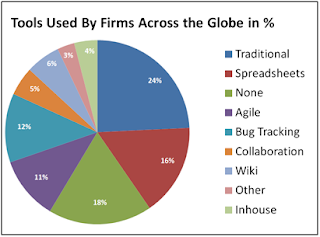In today’s competitive world majority of the organizations use IT applications to handle their business process and to reach out to their customer. With ever increasing customer demand and growing competition from peers, it is very important to ensure that their support is perpetual and the application’s performance is at its peak. To make sure that the application provided by the service provider is working and error free, every organization must have an application support team which will be available to assist the end user if any problem occurs with the application. To maintain high performance and seamless operation an organization should see to it that they get the following services from their Application support team.
Service Desk: A service desk should be available to give immediate support and prompt response to the end user. For effective and efficient functioning of the system, customer should receive 24x7 support. Service Desk should be able to fulfill the following requests from the business:
- User Access Management: Creating user account for new users in the system. Providing system access to the user, depending on his role in the organization. User account will be created and system access will be given only after appropriate approval.
- Change Request: Depending on the project user may come up with a request to change some drop down values or text boxes. Support team should be able to analyze this change request and update the user with the turnaround time by which the change will be implemented.
- Reporting: Support team may receive requests from business to generate reports. For example, sales report, or reports related to employee attendance, etc. from the application.
- Production Support: It can happen that the application may suddenly stop working and may bring the business to a halt. Such scenarios are nightmare for any business as this results in huge amount of revenue loss. Under such critical situation support team should be able to come up with a quick fix, so that the system is up and running and the business can use the application as it was working before.
- Bug Fixing: User may face some issues or bugs which will cause hindrances while using the application. To make sure that the application functions smoothly and the user experience is great, the support team should be able to resolve these issues.
System Upgrade: In case of system upgrade, application support team should test the stability of the new application with the new system. If the organization upgrades their system from Windows XP to Windows 7, then the support team should test the application on the new system and fix the issues that they may face while testing.
Flexibility: Application support team should have flexibility both in terms of cost and resource allocation. Organization while selecting the support service should have the advantage of picking up the right mix of services which according to them will fit their business requirements. Support team should utilize the resources depending on the business needs. Organizations do look for such flexibility in the services before signing the contract.
Experienced Resources: Support team should try to keep as many experienced resources as possible. Experienced resources always play a vital role in customer support. Support team should have access to Knowledge Error Database (KEDB). There are several advantages of having KEDB such as:
- Services are restored faster
- Re-work is avoided as we already know the solution,
- Ticket is not transferred to different level as we can check the database and come up with the solution.
Meet SLAs: Support team should make sure that they meet the expectation mentioned in the SLA. If the team fails to meet the targets mentioned in the SLA then it may be termed as breach of SLA and Customer can escalate the issue to the concerned person.
The key for any business to flourish is that the services provided to them are accessible and stable at all points of time. To ensure that organizations meet its business goals, it has to make sure that it has a great application support team which will provide extensive support under critical situations. Organizations should also make sure that support service and targets are clearly mentioned in the SLA to avoid conflicts in future. Thus we can say that the support team ensures that the application runs smoothly and efficiently to support the organizations business.
About Author:
Akash Poojary is a consultant in Systems Plus Pvt. Ltd. Within Systems Plus, he actively contributes to the areas of Technology and Information Security. He can be contacted at: akash.poojary@spluspl.com





